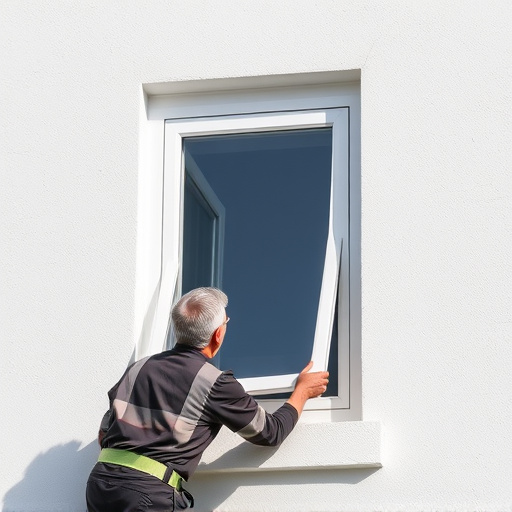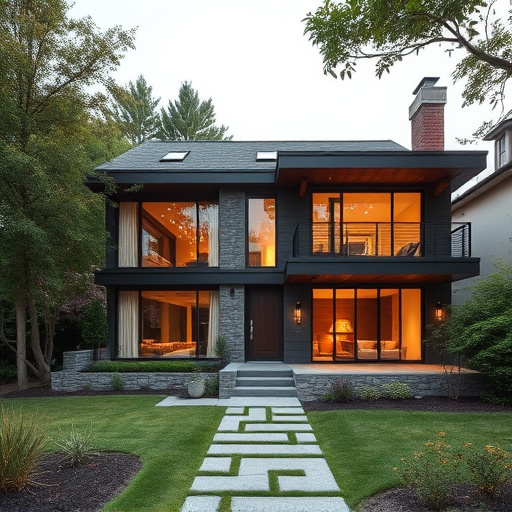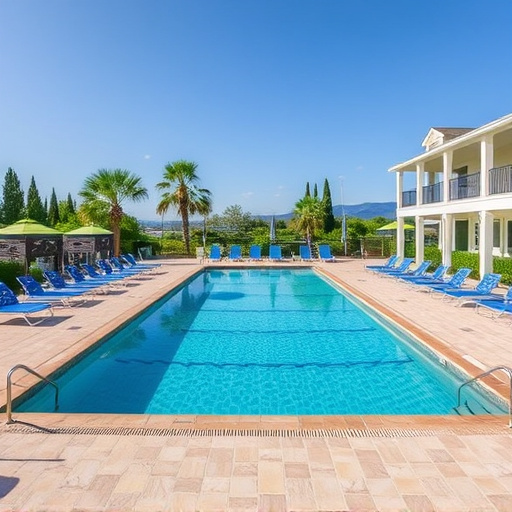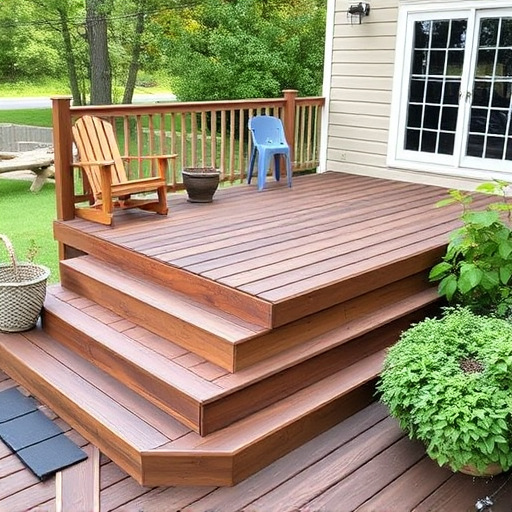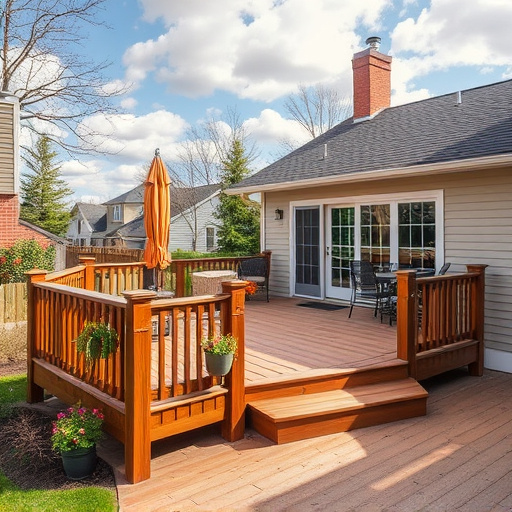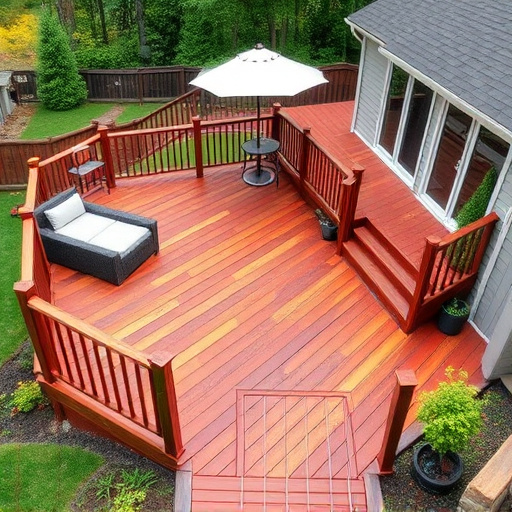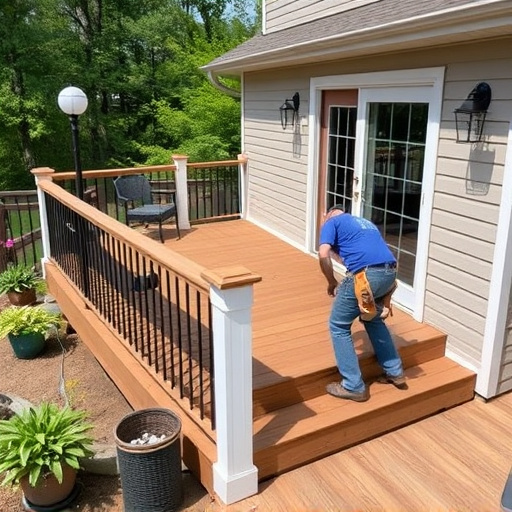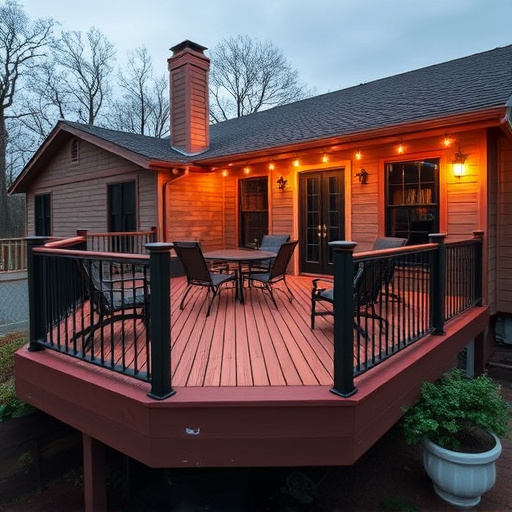Deck systems enhance modern home architecture with aesthetic appeal and functional benefits. Key components include a robust foundation and various decking materials, safety features, and integration with roofing and siding. Professional installation and maintenance maximize lifespan. Design alignment with architectural principles ensures seamless integration, transforming outdoor spaces into an extension of indoor living while boosting curb appeal. Meticulous planning, weatherproofing, and navigating local building codes are crucial for successful harmony between deck systems and home architecture.
Deck systems, an integral part of modern home architecture, offer outdoor living spaces that seamlessly blend with interior design. This article explores the key components and functionality of deck systems, their integration with architectural principles, and the benefits and challenges of creating a harmonious connection between decks and homes. Discover how these versatile structures enhance outdoor living while providing solutions for efficient and aesthetically pleasing design.
- Understanding Deck Systems: Key Components and Functionality
- Integrating Deck Systems With Architectural Design Principles
- Benefits and Challenges of Seamless Deck-Home Integration
Understanding Deck Systems: Key Components and Functionality
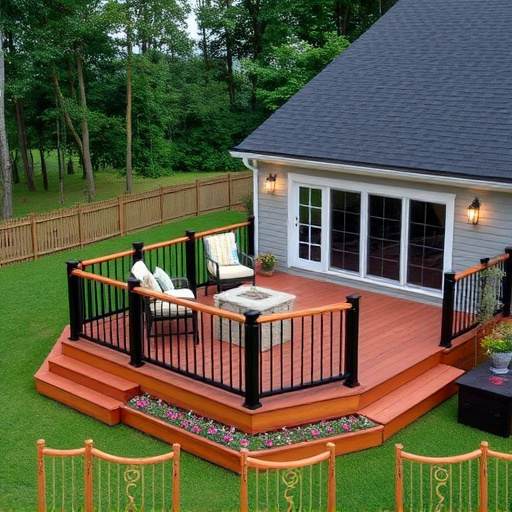
Deck systems are integral to modern home architecture, offering both aesthetic appeal and functional benefits. Understanding their key components is essential for homeowners looking to enhance their outdoor spaces. A typical deck system consists of several critical elements. Firstly, the foundation involves a robust structure, often built with sturdy materials like wood or composite boards, which provides a solid base. These boards are securely fastened to support posts, ensuring stability and durability. The decking material itself is another vital aspect, available in various options such as wooden planks, tiles, or synthetic surfaces, each offering unique aesthetics and maintenance requirements.
Beyond these, deck systems often incorporate railings and ladders for safety and access, as well as lighting fixtures to illuminate the space. Some advanced systems even feature built-in features like storage compartments or integrated outdoor kitchens. Integrating these components seamlessly with existing home exterior services, such as roofing and residential siding, is crucial for achieving a cohesive look. Professional installation and regular maintenance are key to maximizing the lifespan and beauty of deck systems, ensuring they remain a functional and stylish addition to any home.
Integrating Deck Systems With Architectural Design Principles
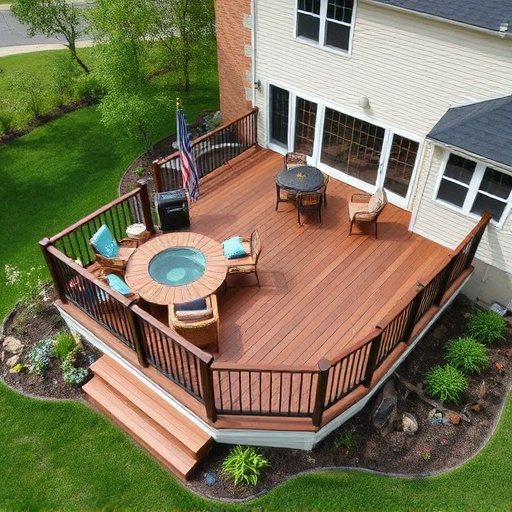
When integrating deck systems with home architecture, it’s essential to align design elements that complement and enhance the overall aesthetic. Architectural design principles guide the placement, materials, and style of decks, ensuring they blend harmoniously with the surrounding structure. For instance, a modern home with clean lines and minimalism might benefit from a contemporary deck system featuring sleek railings and open-concept designs, mirroring the interior’s simplicity.
In contrast, a traditional residential siding installation can be accentuated by a deck that incorporates natural materials like wood, matching the exterior’s aesthetic. Roofing solutions can also play a role in seamless integration, with decking patterns and colors coordinated to complement rooflines and overall architectural themes. This thoughtful approach ensures that deck systems not only function but also become an integral part of the home’s visual appeal.
Benefits and Challenges of Seamless Deck-Home Integration
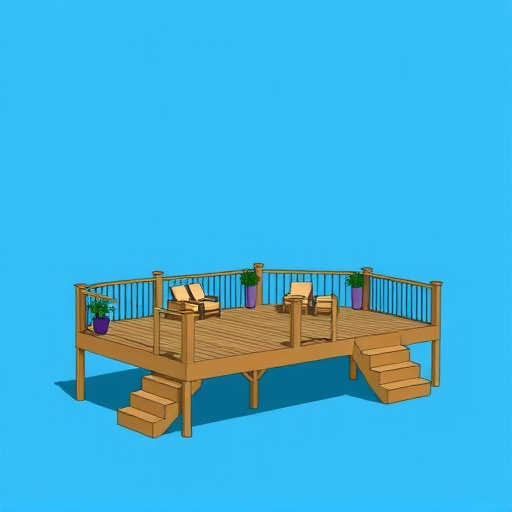
Seamless integration of deck systems with home architecture offers a multitude of benefits for both aesthetics and functionality. By designing decks that complement the overall style and structure of a residence, homeowners can enjoy an extended living space outdoors while maintaining a harmonious look throughout their property. This integration can enhance curb appeal, create a seamless transition from indoor to outdoor areas, and provide a more enjoyable and cohesive outdoor experience.
However, achieving seamless deck-home integration isn’t without its challenges. It requires careful planning and consideration from architects, builders, and designers to ensure that the deck complements both the structural and aesthetic elements of the home. Weatherproofing and maintaining this integration is also crucial, especially for residential roofing and commercial siding applications. Incorporating proper flashing, sealing, and regular maintenance routines ensures that the deck system performs well over time, protecting the home from potential water damage and ensuring longevity. Additionally, with factors like local building codes and climate considerations, achieving seamless integration can be complex, demanding expertise in both design and construction to navigate these challenges effectively.
Deck systems, when seamlessly integrated into home architecture, offer a harmonious extension of indoor living spaces outdoors. By understanding the key components and architectural design principles involved, builders and homeowners can unlock a range of benefits, from enhanced outdoor entertainment to increased property value. While challenges exist, such as weatherproofing and structural considerations, the rewards make it a worthwhile endeavor. Incorporating deck systems that blend smoothly with the overall design ensures a beautiful, functional, and modern living environment that caters to today’s lifestyle demands.

